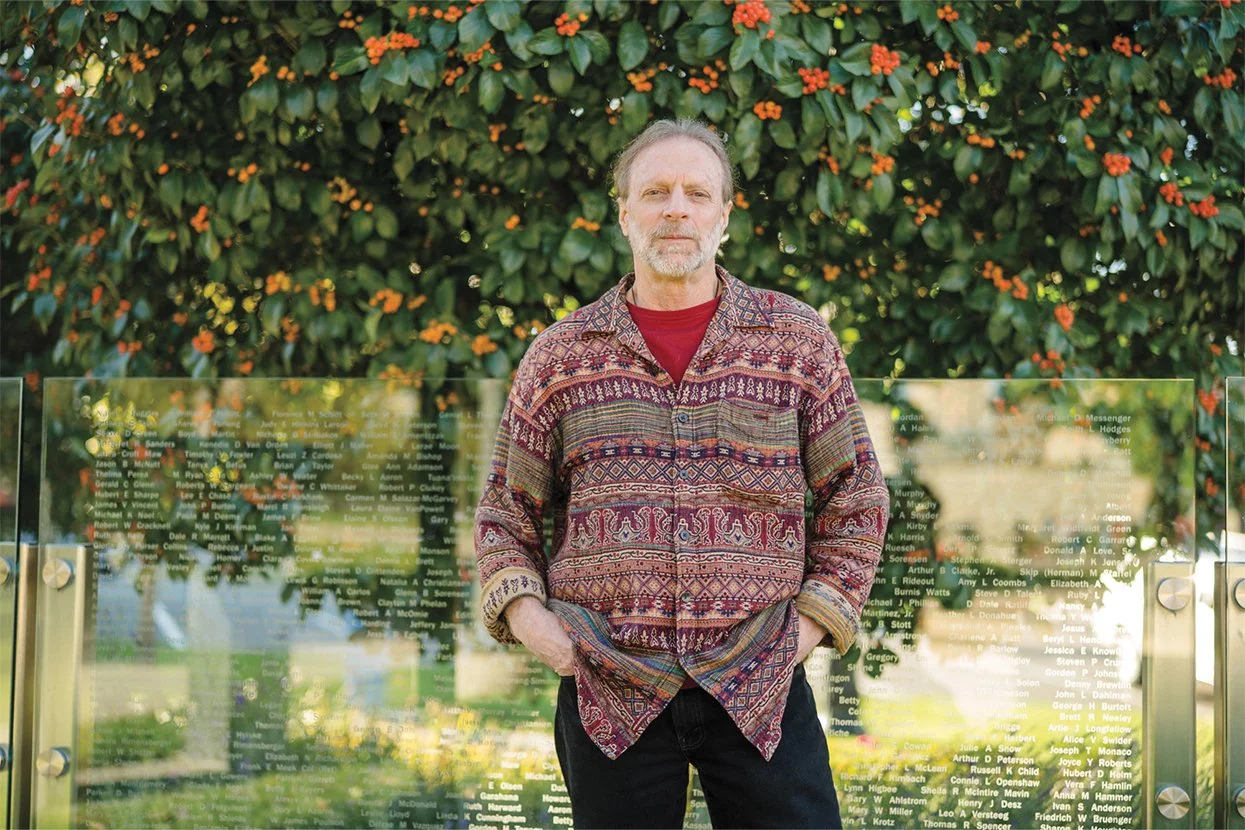Behind the Curtain
The Gift After Death
By Maureen Harmon
Kerry Peterson
Head of the Spencer Fox Eccles School of Medicine’s Body Donor Program
After two or three days of pulling up frozen roots during a particularly cold season, Kerry Peterson, a sugar beet worker, considered a new job: caretaker of the local funeral home. Peterson had absolutely no interest in working with dead bodies, but he could certainly mow the business’s lawn and vacuum the chapel. Over time, he watched the funeral director work. “I saw that he was healing the community—helping people at the worst time of their life,” Peterson says. “That notion—and that work—seemed righteous.”
Eventually, Peterson studied mortuary science and worked as a funeral director, but he couldn’t stomach one aspect of the job: “At the end of the arrangements, I’d have to sit down with a family and say, ‘You’ve just run up a $10,000 bill, how are you going to pay for it?’ It was ripping my heart out.” When he looked around for other opportunities, he found his current role as head of the Spencer Fox Eccles School of Medicine’s Body Donor Program, where he’s worked for 37 years. “I’ve got altruistic donors on one side of me and people who want to cure the ills of the world on the other side. I’m honored to be sitting where I’m sitting.”
We sat down with Peterson to talk about his job—and the beauty and darkness that he’s seen in his work.
What does it mean to “will a body” and how are those bodies used at the medical school?
That’s a question we get a lot. A willed body is basically a human body donated to science, and they’re used in many ways across the world. Some people have heard about the Body Farm in Tennessee, which is used to study decomposition. They’ve heard about bodies being used in crash tests and in military activities. We don’t disparage those things. Thank God people are willing to donate their bodies to those activities—they save a lot of lives. But that’s not what we do at the medical school. Bodies here are used specifically for the purpose of medical research and education, which includes research by doctors and anatomy courses.
What happens once the donor has served his or her purpose?
We cremate every body and every part—we don’t retain anything. For example, we track fingernails and nail beds if they go out for genetic testing. We also provide burial in the city cemetery at no cost or foot the bill to send cremains anywhere in the United States. But we’ve helped people do other things. We work with three air ambulance services, and I’ve sent cremains to the top of Mount Olympus and Mount Ogden. I’ve got families who ask about those options, and I’ve got friends with helicopters. I may work for the University of Utah, but in this program, we serve families first.
What have the dead taught you?
I’m often confronted with grieving people for whom the worst possible thing has happened, and I’ve had some dark times because of my work. But every day I’m reminded how precious life is. Every day is a reminder of how grateful I am to be sucking air. My own wife of 47 years died on December 31, 2022. We took every opportunity to run, jump, and play that we could. I am extremely saddened that we didn’t have more time—we had a lot more plans—but because of this work, I have no regrets about how we lived.

